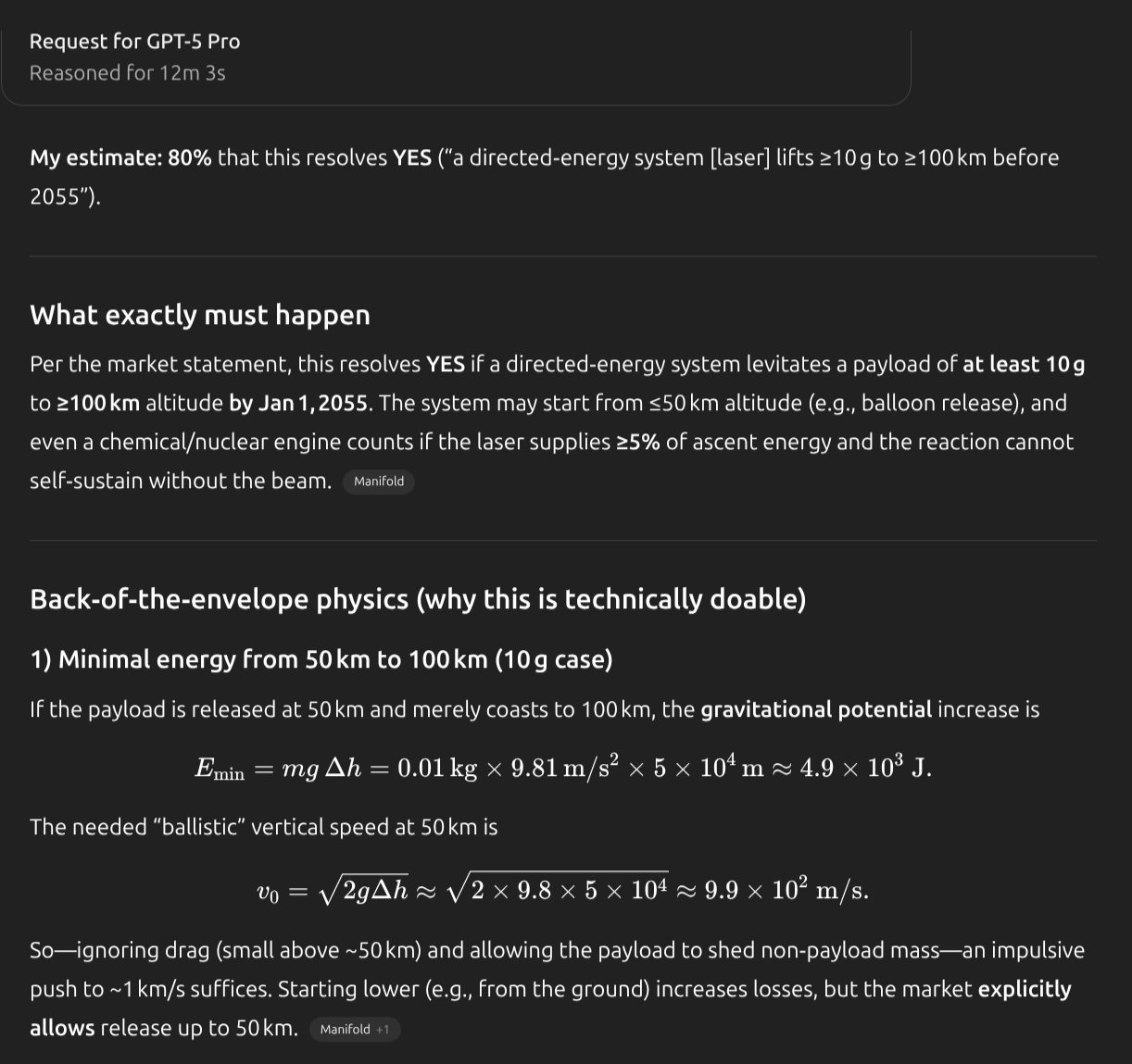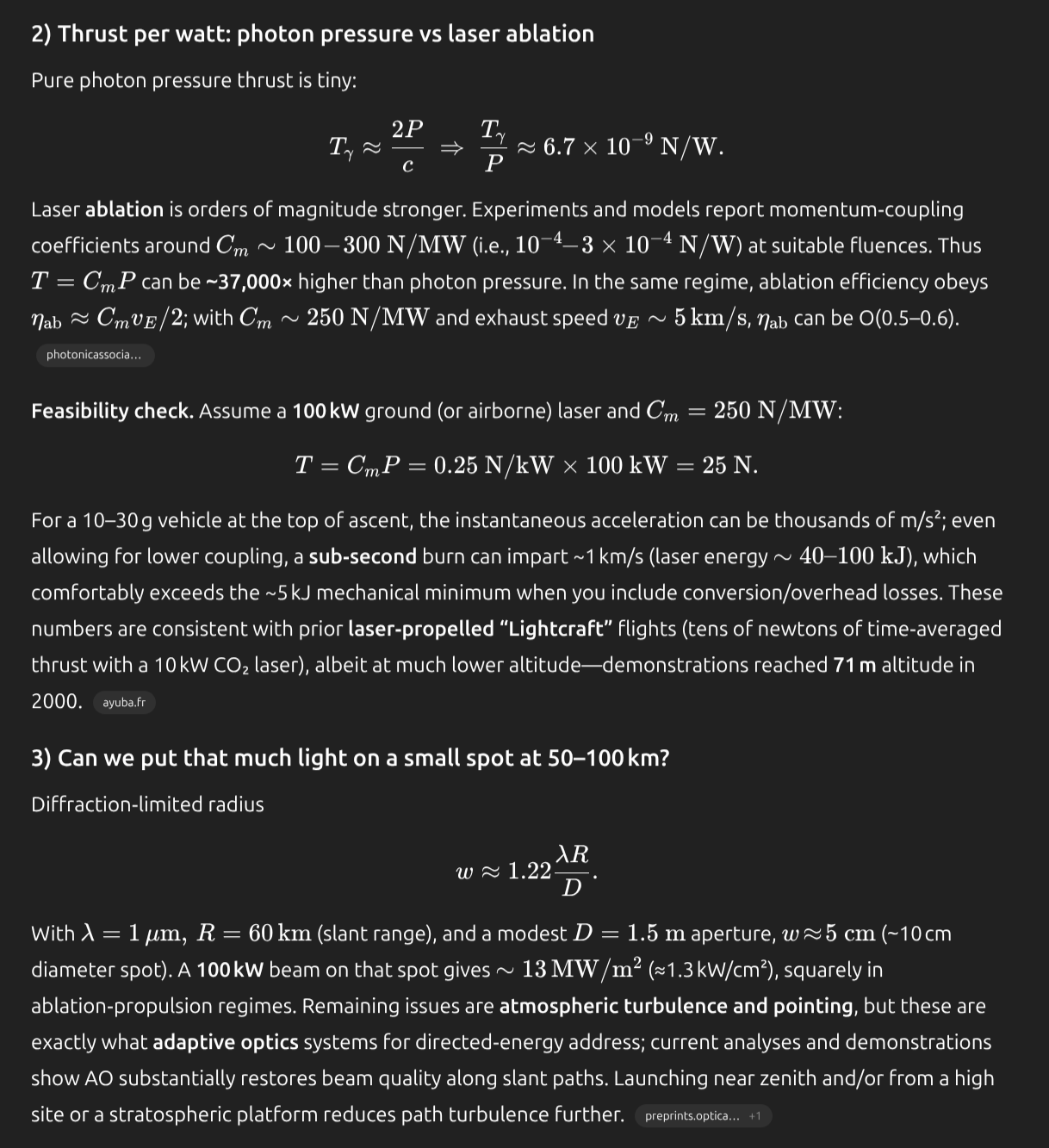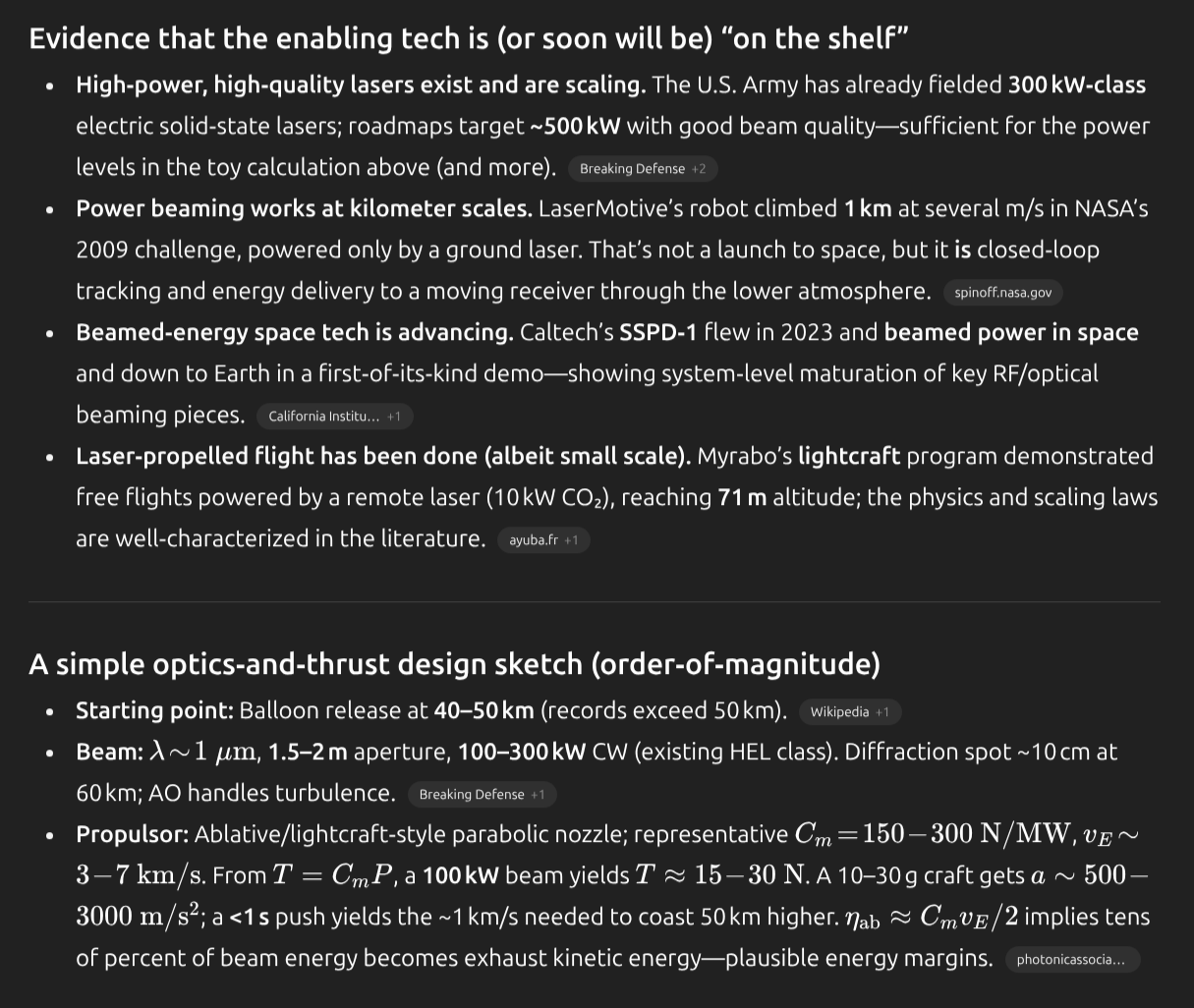
Resolves as YES if a directed energy system has levitated a payload of at least 10 grams to the height of 100km before January 1st 2055.
The payload must be lifted from at maximum 50km by the system (the payload can be released by, for example, a balloon), and must reach an altitude of at least 100km. The mass of the payload must be at least 10g when crossing the 100km threshold (the mass of the payload may decrease during levitation due to ablation).
Questions with the same criteria:
/RemNiFHfMN/will-a-directed-energy-system-lift-35fc264bbc88
/RemNiFHfMN/will-a-directed-energy-system-lift-42027c4cebd3
/RemNiFHfMN/will-a-directed-energy-system-lift-ce9d89c6a57d
/RemNiFHfMN/will-a-directed-energy-system-lift
/RemNiFHfMN/will-a-directed-energy-system-lift-d4c23f6bfc56 (this question)
Chemical or nuclear rockets are included in this criteria provided that the directed energy system supplies at least 5% of the energy generated by the corresponding reaction during the vehicle ascent. The engine design must not allow for the chemical or nuclear process to be self-sustaining.
In this case, for example, the engine lifting the payload could consist of a parabola focusing lasers beamed from the ground towards a location on the device where some form of fuel is released. The lasers would then enable a chemical or nuclear reaction to take place, ejecting reaction mass and driving the payload upwards.
More information: https://en.wikipedia.org/wiki/Beam-powered_propulsion
Image credits: https://commons.wikimedia.org/wiki/File:Lightcraft.jpg



